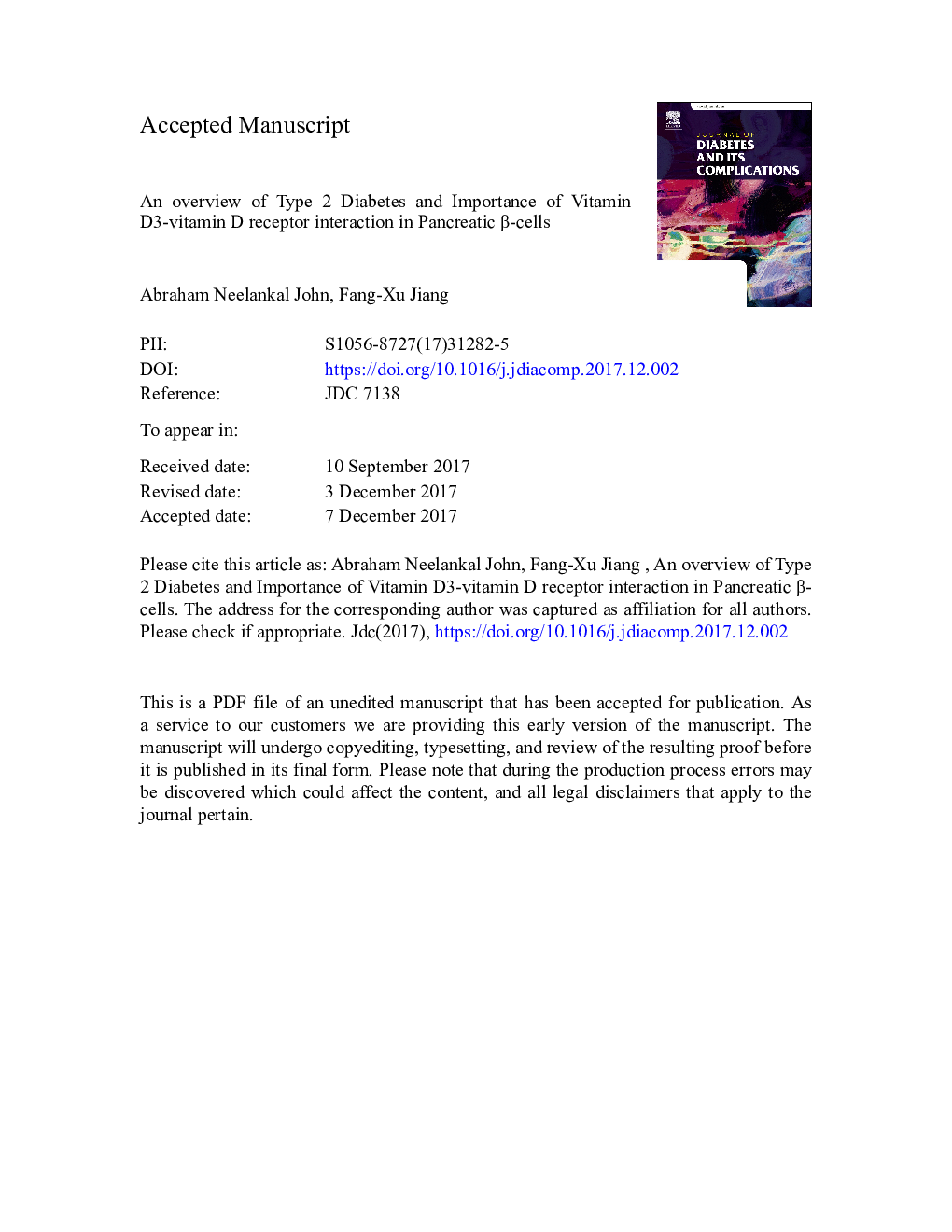| Article ID | Journal | Published Year | Pages | File Type |
|---|---|---|---|---|
| 8632191 | Journal of Diabetes and its Complications | 2018 | 53 Pages |
Abstract
One significant health issue that plagues contemporary society is that of Type 2 diabetes (T2D). This disease is characterised by higher-than-average blood glucose levels as a result of a combination of insulin resistance and insufficient insulin secretions from the β-cells of pancreatic islets of Langerhans. Previous developmental research into the pancreas has identified how early precursor genes of pancreatic β-cells, such as Cpal, Ngn3, NeuroD, Ptf1a, and cMyc, play an essential role in the differentiation of these cells. Furthermore, β-cell molecular characterization has also revealed the specific role of β-cell-markers, such as Glut2, MafA, Ins1, Ins2, and Pdx1 in insulin expression. The expression of these genes appears to be suppressed in the T2D β-cells, along with the reappearance of the early endocrine marker genes. Glucose transporters transport glucose into β-cells, thereby controlling insulin release during hyperglycaemia. This stimulates glycolysis through rises in intracellular calcium (a process enhanced by vitamin D) (Norman et al., 1980), activating 2 of 4 proteinases. The rise in calcium activates half of pancreatic β-cell proinsulinases, thus releasing free insulin from granules. The synthesis of ATP from glucose by glycolysis, Krebs cycle and oxidative phosphorylation plays a role in insulin release. Some studies have found that the β-cells contain high levels of the vitamin D receptor; however, the role that this plays in maintaining the maturity of the β-cells remains unknown. Further research is required to develop a more in-depth understanding of the role VDR plays in β-cell function and the processes by which the beta cell function is preserved.
Keywords
Related Topics
Life Sciences
Biochemistry, Genetics and Molecular Biology
Endocrinology
Authors
Abraham Neelankal John, Fang-Xu Jiang,
